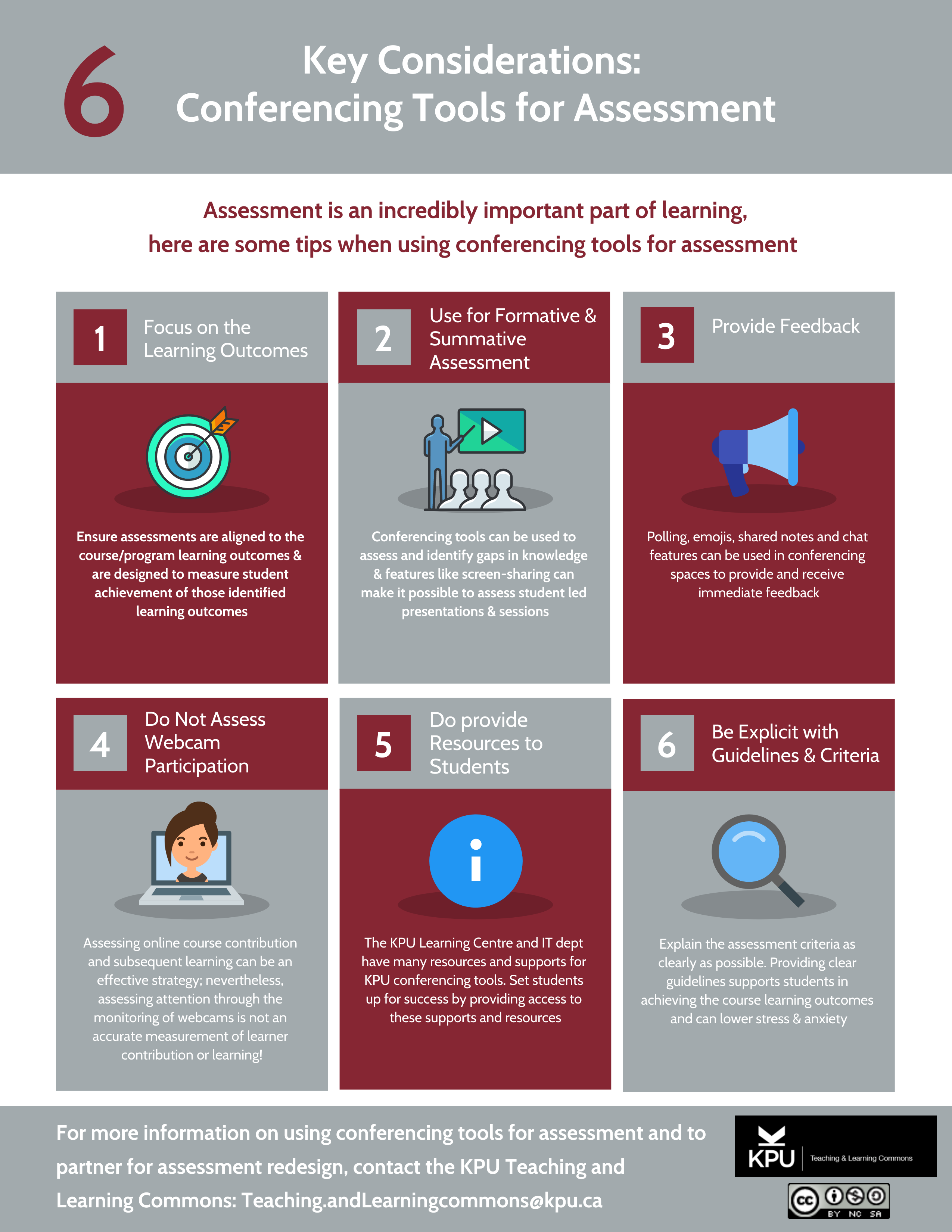9 Assessment in Conferencing Spaces
Designing meaningful assessments is essential when seeking to align course outcomes and authentically measuring student achievement in regards to learning outcomes. Assessment is an incredibly important part of learning as students rely on these evaluations to judge their success in the course. Instructors need to ensure that their assessment methods are clear, applicable and most importantly, designed to measure student achievement of the learning outcomes.
Conferencing tools can support formative and summative assessment while also allowing for creativity in designing useful and unique assessment activities and processes. It is vital that instructors not merely move what they do in the classroom to the conferencing space when assessing students online.
Formative assessments are focused on how students are interacting, progressing and retaining course content to achieve the learning outcomes. Conferencing tools can play a valuable role in this process. It is always essential to start with pedagogical clarity, which then illuminates the search for the most appropriate KPU supported conferencing tool to use. The affordances of conferencing tools for formative assessment include scheduling one-on-one or group check-ins with students and offering open drop-in sessions for additional support. Polling, emojis, and chat features can be used in conferencing spaces to provide and receive immediate feedback, identify gaps and misconceptions, and to assess comprehension of course concepts.
Video Conferencing Features to Consider for Formative Assessment:
All Platforms Have:
- Two-Way Audio & Video
- Public and Private Chat
- Audio & Video Recording
- Share Screens
- Whiteboard
- Annotation
- Shared Notes
- File Transfer
- Emoticons (face emojis to show levels of individual content understanding)
- Presentation Tools (Slides)
- Polling
BBB and Zoom Only:
- Breakout Rooms
MS Teams Only:
-
- Microsoft 365 integrations
- Together mode – Shows everyone in the meeting together in a single picture, not as individual squares
Conferencing tools can also be appropriate for summative assessments. These digital spaces can have an incredible array of tools and communication channels that can be used to demonstrate learning outcomes. Conferencing tools can be an appropriate forum for student-led sessions, presentations, debates, and discussions that demonstrate the knowledge and skills required to meet the learning outcomes.
Conferencing tools may provide analytics that can indicate how students engaged during class by using the chat and shared notes. This can provide insight into content understanding, but also as a means of evaluating the effectiveness of communication channels for all students. For example, when assessing participation, consider basing these on student self-evaluations and using strategies such as asynchronous learner contributions and reflections. Assessing online course contribution and subsequent learning can be an effective strategy; nevertheless, assessing attention through the monitoring of webcams is not an accurate measurement of learner contribution or learning!
Links:

References:
Dukewich, K. (2020). Learning Outcomes and Alignment [Video]. https://kputlcommons.freshdesk.com/support/solutions/articles/43000519790–video-learning-outcomes-alignment
McCarthy, J. (2015). Evaluating written, audio and video feedback in higher
education summative assessment tasks. Issues in Educational Research, 25(2). http://www.iier.org.au/iier25/mccarthy.pdf

